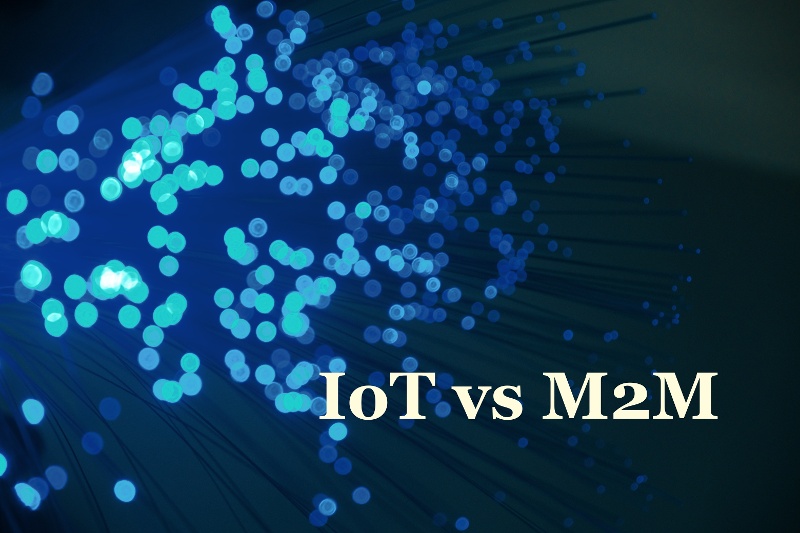

Cloud and Connectivity Synergy for Enterprise IoT
Cloud computing allows companies to store and manage data over cloud platforms, providing scalability in the delivery of applications and Software as a Service (SaaS). IoT devices can generate a significant amount of data per second, with Cisco estimating that IoT will generate 847 zettabytes per year by 2021.
IoT devices are often sensors that collect data and send it to be processed. In the domain of IoT, physical sensors are virtualized before the data is uploaded to the cloud. While IoT devices can generate lots of data, cloud computing paves the way for this data to travel. This data enables better workflow for developers, who can store and access data remotely, which allows them to implement projects without delay.
Cloud computing enables the storage and analysis of data to be done quickly and in real-time, allowing enterprises to get the maximum benefit. This is supported by an industry survey from InformationWeek where 65% of respondents said "the ability to quickly meet business demands" was one of the most important reasons a business should move to a cloud environment.
With cloud computing, organizations do not have to deploy extensive hardware or configure and manage networks and infrastructure. Cloud computing also enables enterprises to scale up the infrastructure, depending on their needs, without setting up additional hardware and infrastructure. This not only helps speed up the development process but can also cut down on development costs. Half of all CIOs and IT leaders surveyed by the cloud-security company Bitglass, reported cost savings from using cloud-based applications.
Devices are connected to the cloud through many different methods depending on the device connectivity capabilities. These methods include cellular, satellite, Wi-Fi, Low Power Wide Area Networks (LPWAN) (e.g. NB-IoT), and direct connection to the Internet via Ethernet. Cellular connectivity offers an excellent choice for uninterrupted data transfer between devices, applications, and the cloud.
Cellular Connectivity: The Reliable and Secure Choice for IoT Projects
Cellular technologies have been designed for reliability, security, and scalability. Cellular Internet of Things (CIoT), based on 3GPP standards, utilizes existing infrastructure to provide excellent IoT coverage and a fast time-to-market.
Cellular IoT projects will include everything from devices, to a dedicated IoT SIM card and management platform. CIoT hardware is always equipped with SIM cards and can connect to networks via 2G, 3G, or LTE connectivity, depending on which cell towers are available in different regions. For example, 2G switch-off has already begun in many parts of the world, as detailed on our previous blog post.
Cellular benefits include:
Coverage: Cellular data coverage today is extensive and growing and has the added benefit of reaching underground spaces, buildings, and rural environments.
Security: End-to-end security is supported and aided by the SIM credentials. This keeps data secure from the device to the cloud.
Bandwidth: Cellular technologies based on 4G LTE are now as fast as 1 Gbps, with 5G expected to have speeds of up to 10 Gbps.
For example, fleet tracking relies on secure coverage across boundaries with no risk of losing connection. To ensure this doesn’t happen, cellular connectivity is better equipped than alternative connectivity methods, e.g. NB-IoT is designed for low throughput devices where a delay in communications will not hinder the service. In fleet management, with vehicles driving across borders, it's essential to have a robust and constant connection so that devices can be tracked in real time.
emnify – Bringing the Cloud and Cellular Connectivity Together
emnify is an IoT connectivity provider that enables cellular IoT products and services worldwide. The company serves the growing needs of developers and enterprises who require secure, global connectivity for IoT/M2M applications. Its multi-network emnify SIM can operate instantly in over 180 countries across 540 mobile networks.
emnify connected devices benefit from a purpose-built and fully virtualized mobile core network that enables features like virtual private device cloud and dynamic regional internet breakouts. The emnify management platform gives an oversight of IoT device connectivity as well as access to analytics with an easy to use and intuitive UI. The emnify SIM is multi-carrier meaning it will automatically connect to the best cellular network and ensure the connection remains stable and continuously connected all around the world.
In August 2018, emnify achieved the AWS IoT Competency which differentiates emnify as an AWS Partner Network (APN) member that has demonstrated relevant technical proficiency and proven customer success delivering solutions seamlessly in the AWS Cloud environment. Learn more about the successful transition to a Cloud Mobile Network and it's benefits in the emnify case study prepared for Telecom Liechtenstein.
Get in touch with our IoT experts
Discover how emnify can help you grow your business and talk to one of our IoT consultants today!

emnify
The content team of emnify is specialized in all things IoT. Feel free to reach out to us if you have any question.



